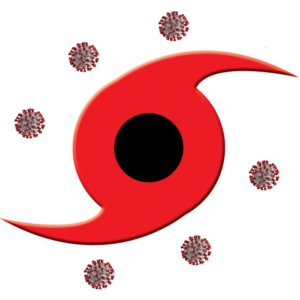Workers’ Comp to feel the risk, too
 It may come as no surprise that states with the highest hurricane risk and that are suffering the highest number of COVID-19 cases might have an especially big problem if the two catastrophes come together at the same time. That’s the conclusion of a new report by Property Claims Services (PCS), which shows Florida at the top of the risk list. COVID is now poised to impact the workers’ compensation industry as well.
It may come as no surprise that states with the highest hurricane risk and that are suffering the highest number of COVID-19 cases might have an especially big problem if the two catastrophes come together at the same time. That’s the conclusion of a new report by Property Claims Services (PCS), which shows Florida at the top of the risk list. COVID is now poised to impact the workers’ compensation industry as well.
PCS, a Verisk Company, has developed a “Covicane Impact Score”, which shows tropical storm and coronavirus risks clearly converging in several key states. Florida scored worst, with a particularly high score, followed by Louisiana, Texas, Alabama, Mississippi, Georgia and Puerto Rico. PCS said a major hurricane (which it defined as more than $5 billion in damages) would drive people into shelters and to the homes of friends and families, “vastly increasing the transmission of COVID-19” with a “greater strain on the healthcare system, more pressure on all levels of government, and an elongation of the time and effort needed to rebuild after a disaster.” Higher infection rates would disrupt supply chains and create scarcities that drive up costs, too.
“The resurgence of COVID-19 across the United States and low rates of vaccination in parts of the country particularly exposed to tropical storms mean that one major hurricane could turn into a long super-spreader event that could also translate to a slow, uneven, and costly post-event rebuilding process,” the report says, noting the scenario would apply to any catastrophe, not just tropical storms.
Meanwhile, the next storm around the corner for the insurance industry may be the so-called “long haul COVID” cases – patients dealing with long-term health issues following initial treatment. Now that the federal government considers it a disability, the workers’ compensation insurance industry will now be on the hook, according to a recent article in Business Insurance. Symptoms include fatigue, chest pain, shortness of breath, joint or muscle pain, and difficulty concentrating, according to recent guidance by the feds.
According to the National Council on Compensation Insurance (NCCI), there were 45,000 COVID-related workers’ comp claims in the U.S. in 2020, with more than 95% costing less than $10,000 and only about 1% surpassing $100,000. But most of those claims were indemnity only, providing income for the worker while in recovery, and didn’t include medical costs. Industry professionals quoted in the article say that may change once you include long-haul cases, whose associated costs remain largely unknown. Stay tuned.
LMA Newsletter of 8-23-21

